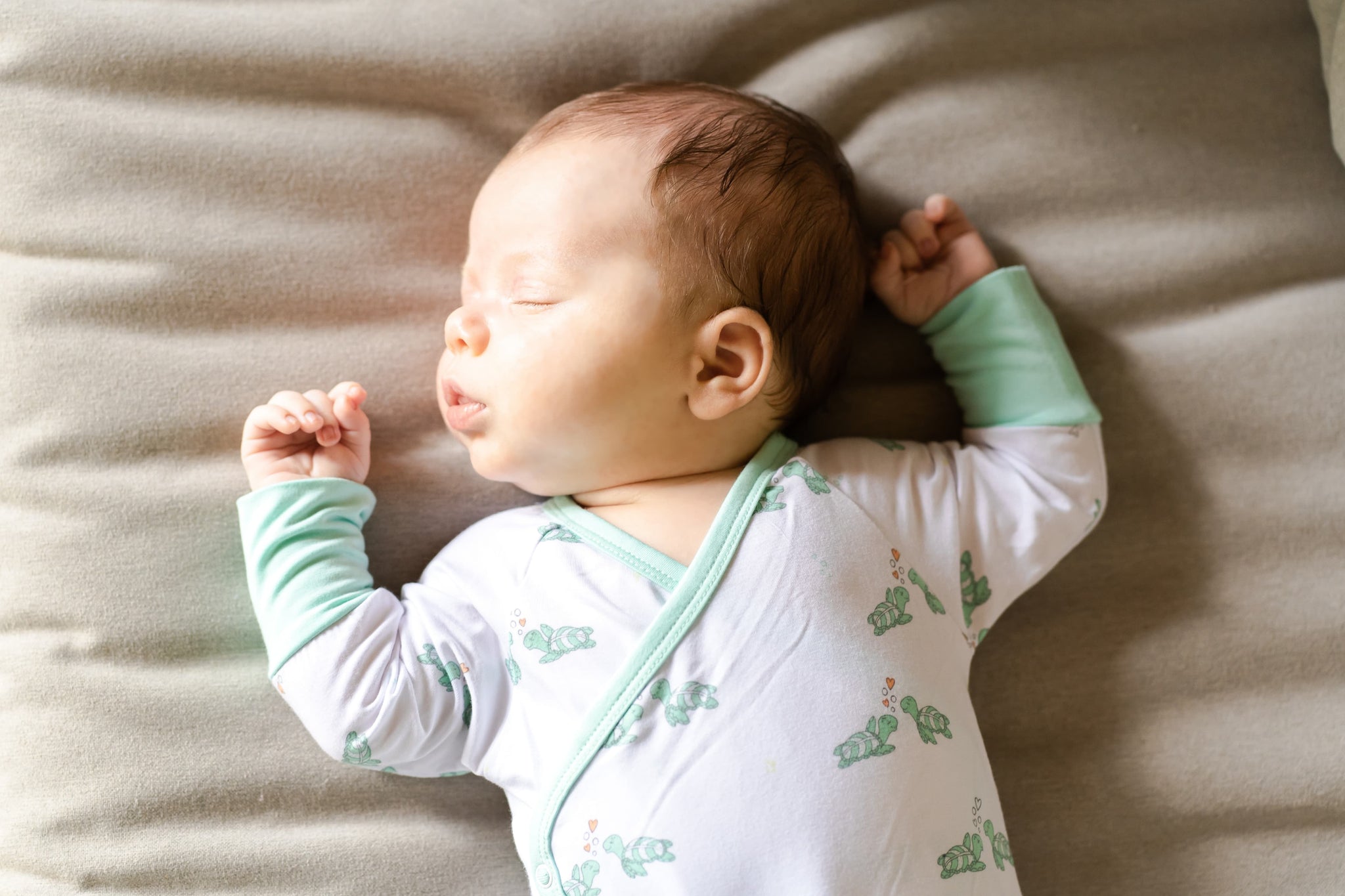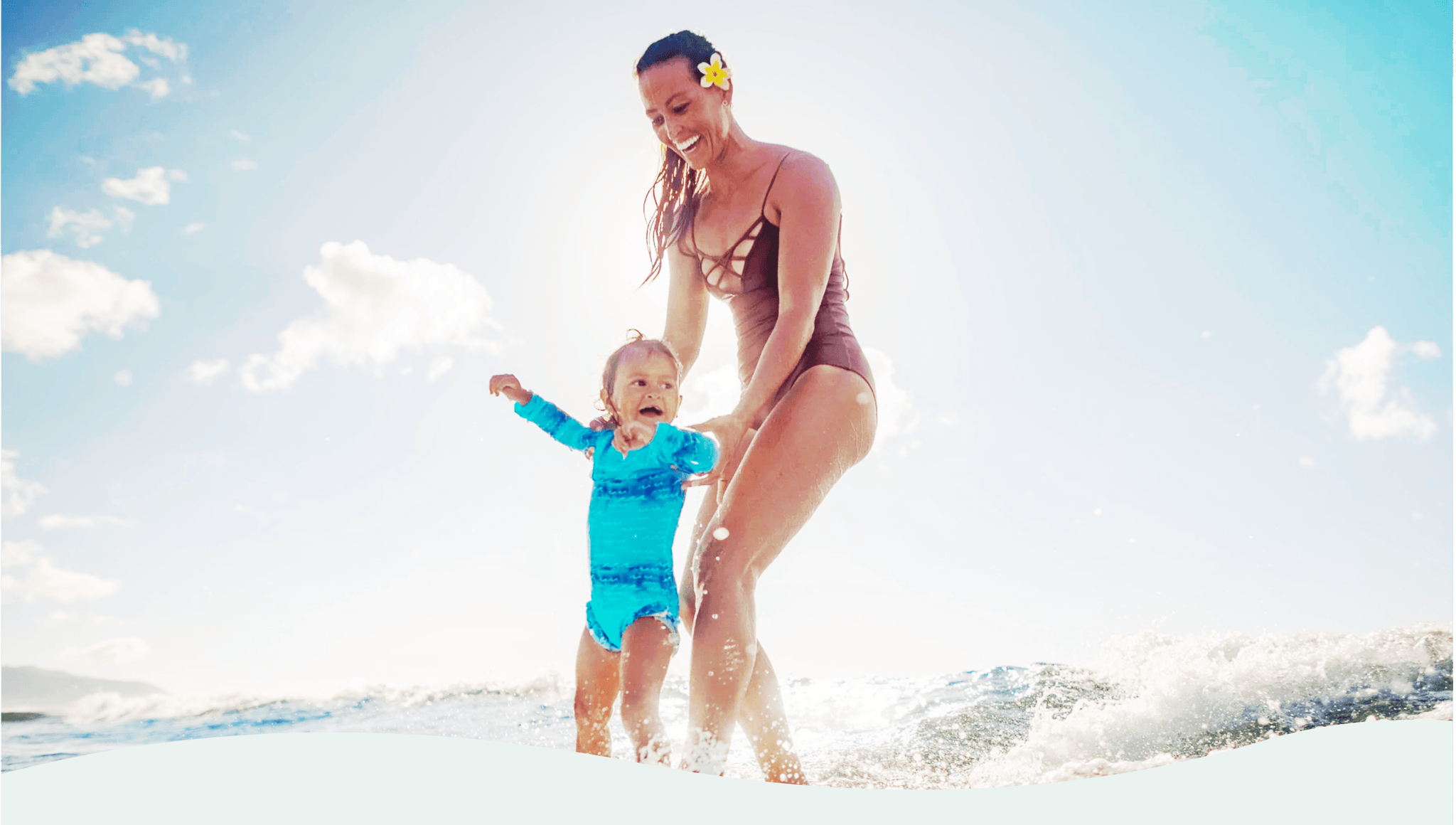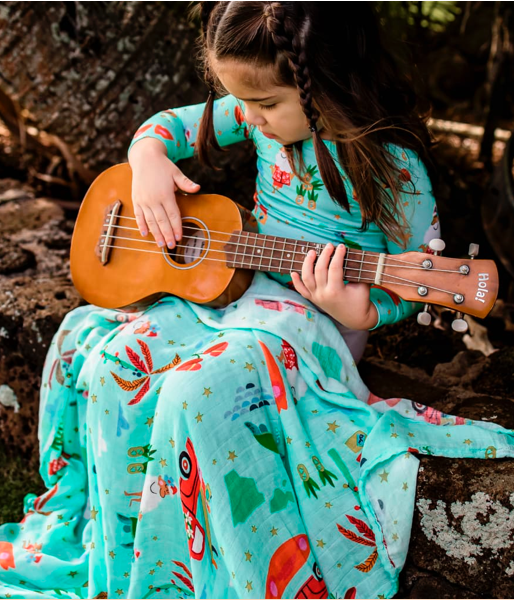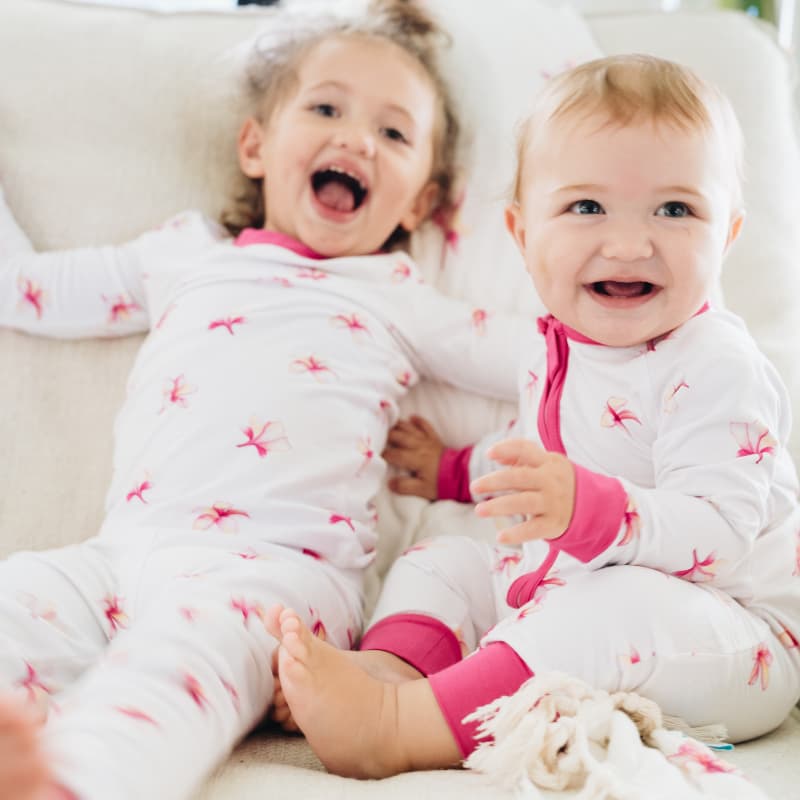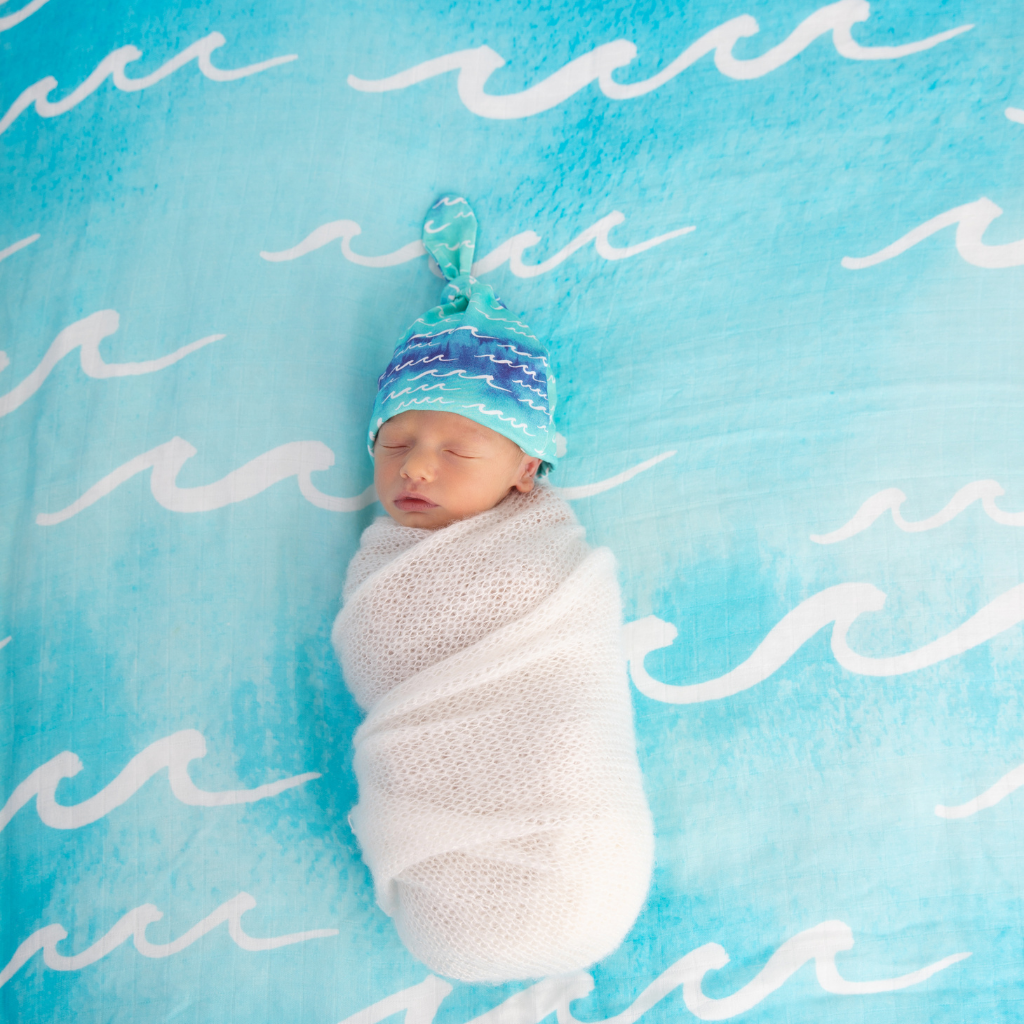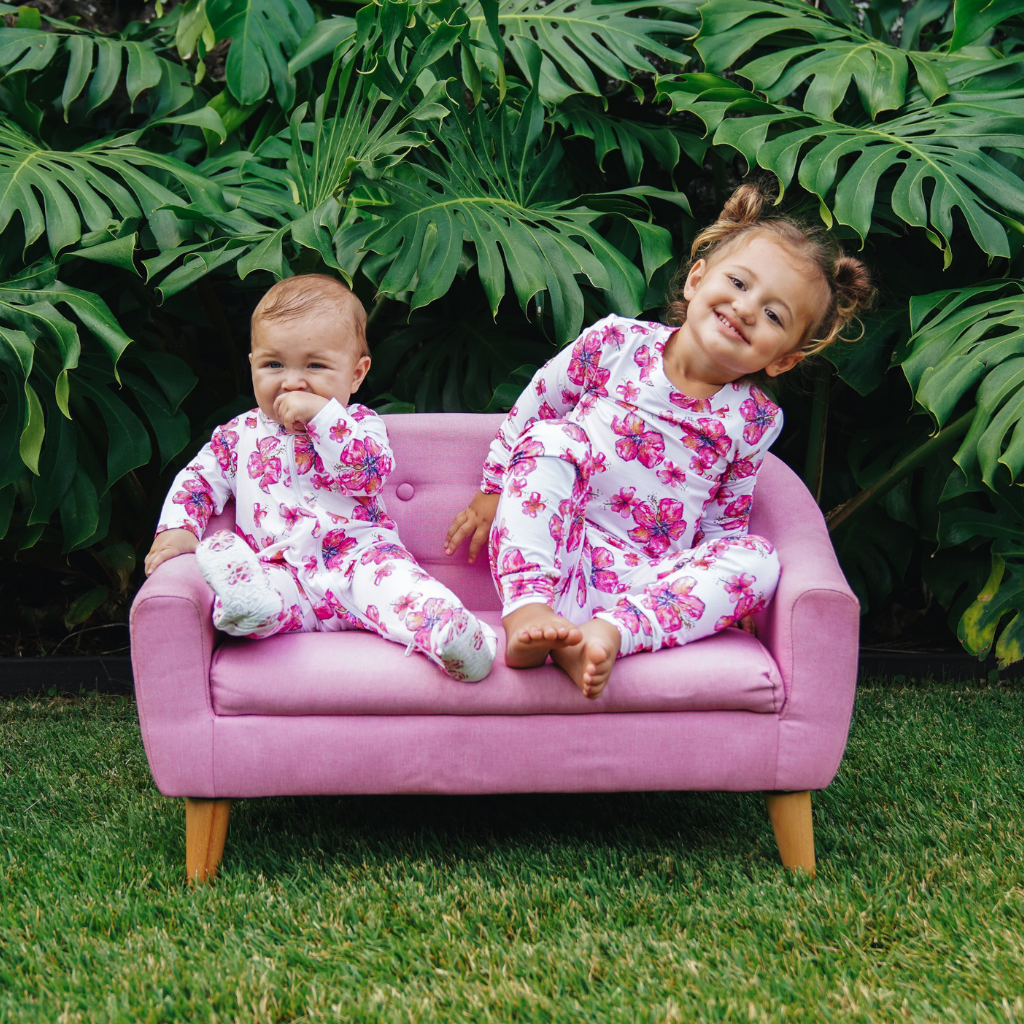Sleepwear might seem simple until you're folding swaddles and wondering if baby socks are too much for the night ahead. Whether your little one is just a few days old or starting to stretch their overnight sleep, knowing how to dress them comfortably can make all the difference.
Babies aren't great at regulating their temperature, so what you choose for sleep matters. Instead of guessing or layering based on what feels right to you, it helps to use room temperature as your guide and focus on soft, breathable fabrics that allow your baby to rest safely.
In this guide, we'll walk through how to dress your baby for sleep across different temperatures, plus what to watch for to make sure they're not too warm or too chilly.
Understanding Baby's Sleep Temperature Needs
For newborns and infants up to around 12 months, regulating body temperature during sleep is especially important. Babies this age are more sensitive to changes in their environment and can't adjust their body temperature as easily as older children or adults.
Experts recommend keeping your baby's room between 68°F and 72°F (20°C-22°C) to maintain a safe, comfortable sleep environment. The key is to dress your baby for the room they're sleeping in, not the outdoor weather. If the room feels comfortable to you in light clothes, it's likely just right for your little one, too. Breathable layers, soft fabrics, and mindful dressing are your best tools to avoid overheating while still keeping your baby cozy.
How Many Layers Should Your Baby Wear to Sleep?
A good rule to follow is this: dress your baby in one more layer than you would wear to be comfortable in the same environment. For example, if you're sleeping in a t-shirt and pajama pants with a light blanket, your baby might wear a footed onesie with a swaddle or sleep sack.
Light, breathable layers are best, especially muslin or cotton fabrics that allow airflow and help prevent overheating. Instead of heavy fabrics or thick blankets, go for pieces you can easily add or remove. And always check your baby's neck or back (not hands or feet) to feel if they're too warm or too cool. Their skin should feel slightly warm, not sweaty or cold.
Swaddling for Better Sleep: When, Why, and How
In the first few months, swaddling can be a comforting way to help your baby feel safe and secure as they adjust to life outside the womb. The gentle wrap mimics the snugness they're used to, which can ease the startle reflex and encourage longer stretches of sleep.
Swaddling is generally recommended for newborns up to about 8 weeks old, or until your baby starts showing signs of rolling. After that, it's safest to transition to a sleep sack or wearable blanket that allows for free movement.
If you're swaddling, choose a lightweight, breathable fabric and keep the wrap snug around the chest while leaving room at the hips for healthy development. Always place your baby on their back to sleep, and avoid layering too much underneath the swaddle.
Our buttery-soft Coco Moon swaddles are thoughtfully designed for breathability, comfort, and a little extra aloha at bedtime. View our swaddle collection here.
Swaddling isn't a must for every baby, but when it works, it can be a soothing part of your bedtime rhythm, one that helps your little one feel held and calm as they drift off to sleep.
Need help with swaddling? Check out this helpful article to get you started!
How to Dress Your Baby for Sleep Based on Room Temperature
Room temperature plays a big role in how to dress your baby for a safe and restful night. The general recommendation is to keep the room between 68–72°F (20–22°C), but even small changes can affect how many layers your baby needs.
At warmer temperatures (around 72°F), a single short-sleeve onesie or bodysuit may be enough, especially if your baby is swaddled. On cooler nights (closer to 68°F), a footed sleeper or a long-sleeve onesie with a lightweight swaddle or sleep sack can help keep them cozy without overheating.
When swaddling, remember that it acts as one layer, so dress your baby lightly underneath. Always feel their chest or back to check for warmth, not their hands or feet, which can naturally run cooler.
As your baby grows and transitions out of the swaddle, opt for wearable blankets that are appropriate for the room's temperature. These allow movement while still providing comfort and warmth.
How to Know If Your Baby Is Too Hot or Too Cold
Babies can't always regulate their temperature as well as adults, so it's important to keep an eye on how they’re feeling, especially during sleep. One of the best ways to check is by feeling the back of their neck, chest, or tummy. If they feel sweaty, hot, or clammy, they're likely overdressed. If they feel cool to the touch or their chest seems chilled, they might need an extra layer.
Common signs your baby may be too hot include flushed cheeks, rapid breathing, damp hair, or fussiness. If they're too cold, they may be more restless, have cool extremities, or wake more frequently. A baby who is comfortably dressed will usually sleep more soundly and feel just warm enough to the touch, not hot, not chilly, just right.
Wrapping Your Baby in Just-Right Comfort
When it comes to sleep, comfort is everything. Paying attention to temperature and choosing the right layers helps your baby rest more peacefully through the night. Whether it's a warm summer evening or a cooler night with the breeze rolling in, keeping things soft, breathable, and simple can make all the difference. And as your little one grows, you'll get to know exactly what works best — one cozy night at a time.

